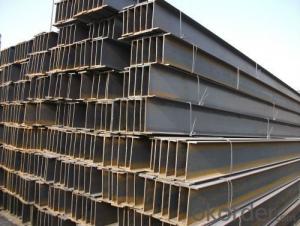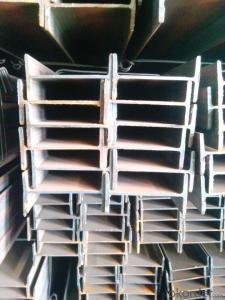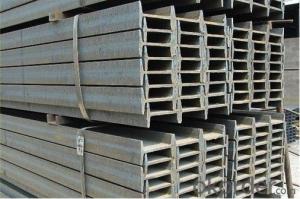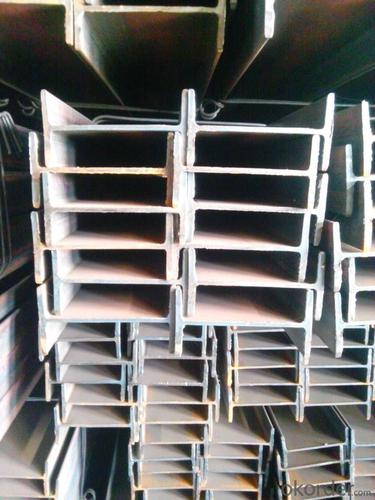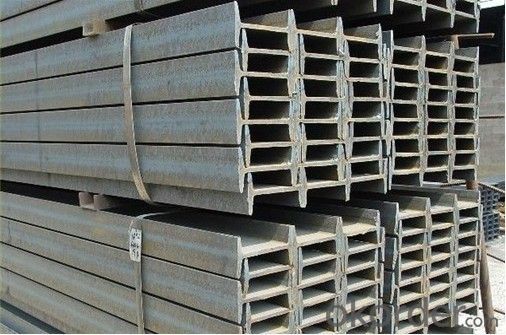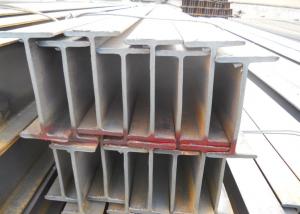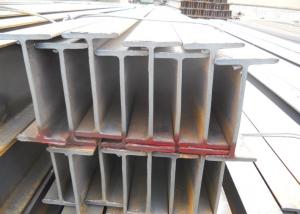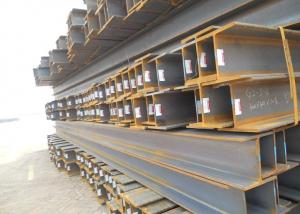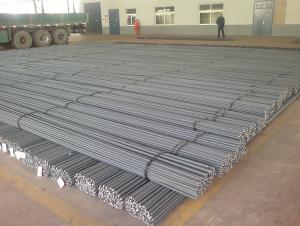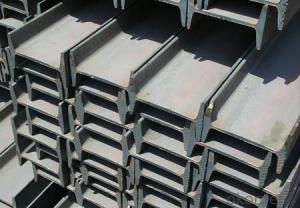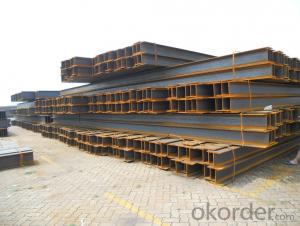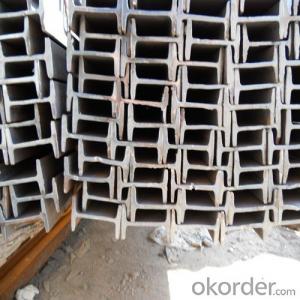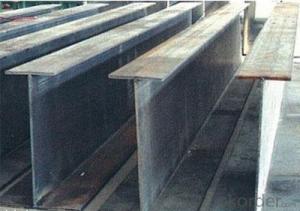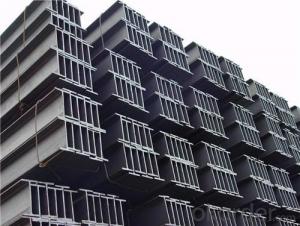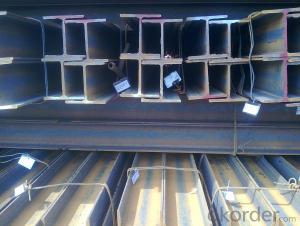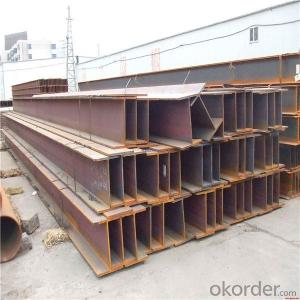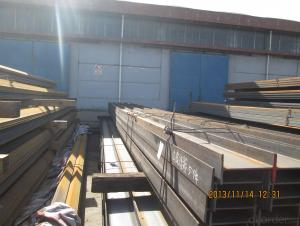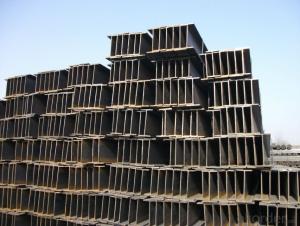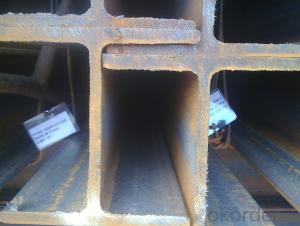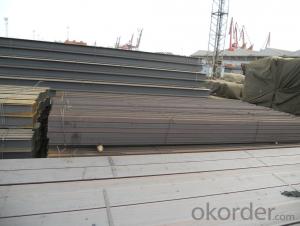H-Type Steel or H Beam Steel Section High Quality
- Loading Port:
- China main port
- Payment Terms:
- TT OR LC
- Min Order Qty:
- 50 m.t.
- Supply Capability:
- 10000 m.t./month
OKorder Service Pledge
OKorder Financial Service
You Might Also Like
Specification
H-Type Steel or H Beam Steel Section Made in China
Product Description:
OKorder is offering H-Type Steel or H Beam Steel Section Made in China at great prices with worldwide shipping. Our supplier is a world-class manufacturer of steel, with our products utilized the world over. OKorder annually supplies products to European, North American and Asian markets. We provide quotations within 24 hours of receiving an inquiry and guarantee competitive prices.
Product Applications:
H-Type Steel or H Beam Steel Section Made in China are ideal for structural applications and are widely used in the construction of buildings and bridges, and the manufacturing, petrochemical, and transportation industries.
H beam is widely used in various building structure and engineering structure:
a).used for the plant, high-rise building construction
b).used for the bridge, shipment building
c).used for lifting and transportation machinery, equipment manufacturing base building
d).used for the support, foundation pile manufacturing
Main Product Features:
· Premium quality
· Prompt delivery & seaworthy packing (30 days after receiving deposit)
· Corrosion resistance
· Can be recycled and reused
· Mill test certification
· Professional Service
· Competitive pricing
Product Specifications:
1. Standard: JIS G3192 OR GB/T11263-2005
2. Grade: Q235/SS400/S235JR
3. Length: 6m-12m
4. Packing:standard export packagin
| STANDARD: JIS G3192 OR GB/T11263-2005 | |||
| H beam Section sizenma(mm) | Weight (kg/m) | ||
| Height×Breadth | Web thichness | Flange thichness | |
| 100×100 | 6 | 8 | 16.9 |
| 125×125 | 6.5 | 9 | 23.6 |
| 150×150 | 7 | 10 | 31.1 |
| 175×175 | 7.5 | 11 | 40.4 |
| 200×200 | 8 | 12 | 49.9 |
| 250×250 | 9 | 14 | 71.8 |
| 300×300 | 10 | 15 | 93.0 |
| 300×300 | 15 | 15 | 105.0 |
| 350×350 | 12 | 19 | 134.9 |
| 400×400 | 13 | 21 | 171.7 |
| 148×100 | 6 | 9 | 20.7 |
| 194×150 | 6 | 9 | 29.9 |
| 244×175 | 7 | 11 | 43.6 |
| 294×200 | 8 | 12 | 55.8 |
| 340×250 | 9 | 14 | 78.1 |
| 390×300 | 10 | 16 | 104.6 |
| 440×300 | 11 | 18 | 120.8 |
| 482×300 | 11 | 15 | 110.8 |
| 488×300 | 11 | 18 | 124.9 |
| 582×300 | 12 | 17 | 132.8 |
| 588×300 | 12 | 20 | 147.0 |
| 100×50 | 5 | 7 | 9.3 |
| 125×60 | 6 | 8 | 13.1 |
| 150×75 | 5 | 7 | 14.0 |
| 175×90 | 5 | 8 | 18.0 |
| 198×99 | 4.5 | 7 | 17.8 |
| 200×100 | 5.5 | 8 | 20.9 |
| 248×124 | 5 | 8 | 25.1 |
| 250×125 | 6 | 9 | 29.0 |
| 298×149 | 5.5 | 8 | 32.0 |
| 300×150 | 6.5 | 9 | 36.7 |
| 346×174 | 6 | 9 | 41.2 |
| 350×175 | 7 | 11 | 49.4 |
| 396×199 | 7 | 11 | 56.1 |
| 400×200 | 8 | 13 | 65.4 |
| 446×199 | 8 | 12 | 65.1 |
| 450×200 | 9 | 14 | 74.9 |
| 496×199 | 9 | 14 | 77.9 |
| 500×200 | 10 | 16 | 88.1 |
| 596×199 | 10 | 15 | 92.4 |
| 600×200 | 11 | 17 | 103.4 |
| 700×300 | 13 | 24 | 181.8 |
| 800×300 | 14 | 26 | 206.8 |
| 900×300 | 16 | 28 | 240.1 |

- Q: What are the cost implications of using steel H-beams?
- The cost implications of using steel H-beams can vary depending on multiple factors. Initially, the upfront cost of steel H-beams may be higher compared to other building materials. However, steel H-beams provide numerous long-term cost benefits. They are incredibly durable and resistant to wear and tear, reducing the need for frequent repairs or replacements. Additionally, steel H-beams are highly versatile and can support large loads, allowing for efficient structural designs and potentially reducing the overall construction costs. Furthermore, steel is a sustainable and recyclable material, which can contribute to cost savings in terms of waste management. Overall, while the initial investment may be higher, the long-term cost savings and advantages offered by steel H-beams make them a favorable choice for many construction projects.
- Q: Are steel H-beams resistant to mold and mildew?
- No, steel H-beams are not resistant to mold and mildew.
- Q: Are steel H-beams resistant to chemical exposure or spills?
- Steel H-beams have a general resistance to chemical exposure and spills. Steel is renowned for its durability and strength, which makes it less prone to damage from chemical substances. However, the level of resistance may vary depending on the type and concentration of the chemical involved. While steel is generally resistant to most chemicals, highly corrosive substances or prolonged exposure to certain chemicals can eventually lead to deterioration and compromise the structural integrity of the H-beams. Consequently, it is crucial to carefully consider the specific chemical environment and seek guidance from experts or manufacturers to ensure the appropriate grade of steel is selected for the intended application. In addition, proper maintenance and regular inspections are of utmost importance to detect any signs of corrosion or damage caused by chemical exposure and implement appropriate measures to mitigate potential risks.
- Q: How are steel H-beams protected against corrosion during construction?
- Steel H-beams are protected against corrosion during construction through a process called galvanization. Galvanization involves coating the steel beams with a layer of zinc, either through hot-dip galvanization or electroplating. In hot-dip galvanization, the steel beams are first cleaned to remove any impurities or contaminants. Then, they are immersed in a bath of molten zinc, which adheres to the surface of the beams. This process creates a protective layer of zinc that acts as a barrier against corrosion. Alternatively, electroplating can be used to protect steel H-beams from corrosion. In this method, a thin layer of zinc is deposited onto the surface of the beams using an electric current. The electric current causes the zinc ions to bond with the steel, forming a protective coating. Both hot-dip galvanization and electroplating provide excellent corrosion resistance to steel H-beams. The zinc layer acts as a sacrificial coating, meaning that if the beams are exposed to moisture or other corrosive elements, the zinc will corrode before the steel. This sacrificial action helps to extend the lifespan of the beams and prevent structural damage caused by corrosion. Overall, the process of galvanization plays a crucial role in protecting steel H-beams against corrosion during construction. By applying a layer of zinc, these beams are able to withstand harsh environmental conditions and maintain their structural integrity over time.
- Q: Calculation method of H steel area
- It's about 1.74 square meters. The price of the material is about 5100 yuan / ton
- Q: Are steel H-beams resistant to water or moisture damage?
- Steel H-beams are highly resistant to water and moisture damage. Unlike wood or other organic materials, steel does not absorb water or moisture. This characteristic prevents steel H-beams from rotting, warping, or deteriorating when exposed to water or moisture. Moreover, steel is also resistant to the growth of mold and mildew, making it even more durable in wet or humid environments. Some steel H-beams are coated with galvanized protection to further prevent corrosion caused by moisture exposure. However, it is important to note that while the steel H-beams themselves are resistant to water or moisture damage, the connections or joints between the beams may corrode if precautions are not taken. Therefore, regular maintenance and inspections are necessary to ensure the long-term integrity and performance of steel H-beams in wet or humid conditions.
- Q: Are steel H-beams suitable for structures with curved elements?
- No, steel H-beams are typically not suitable for structures with curved elements. They are designed to provide rigid support and stability in straight structures, and their shape does not lend well to accommodating curved elements.
- Q: Can steel H-beams be used in automotive manufacturing?
- Certainly! Steel H-beams have a multitude of applications in automotive manufacturing. These beams, also referred to as I-beams or universal beams, are renowned in the construction industry for their durability and strength. However, they are equally valuable in the automotive sector. H-beams can be effectively incorporated into vehicle frames, chassis, and suspension systems. Their exceptional structural support allows them to bear heavy loads and endure impacts, thus guaranteeing the safety and stability of the vehicle. Moreover, H-beams are perfect for the production of engine components, including connecting rods and crankshafts, owing to their high tensile strength and resistance against bending and twisting forces. Furthermore, steel H-beams offer additional benefits such as cost-effectiveness, easy availability, and simple fabrication. They can be easily obtained from steel suppliers and are accessible in a wide assortment of sizes and specifications, making them well-suited for various automotive applications. Additionally, steel is a recyclable material, aligning with the growing emphasis on sustainability and environmental consciousness within the automotive industry. In conclusion, steel H-beams are undeniably valuable in automotive manufacturing due to their strength, durability, versatility, and cost-effectiveness. Their utilization in vehicle frames, suspension systems, and engine components enhances the overall safety, stability, and performance of automobiles.
- Q: Can steel H-beams be used in retrofitting existing buildings?
- Retrofitting existing buildings with steel H-beams is indeed possible. Steel H-beams are widely utilized in retrofitting projects due to the numerous advantages they offer. Firstly, their high strength enables them to bear heavy loads, making them suitable for reinforcing structures. Moreover, steel H-beams are versatile and can be easily fabricated and customized to meet specific building requirements. In retrofitting existing buildings, steel H-beams can be employed to fortify various structural elements like columns, beams, and foundations. They can serve as additional supports or replace weaker or damaged components. Incorporating steel H-beams into a building's framing system can also enhance its overall stability and ability to withstand seismic forces. Additionally, steel H-beams possess durability and resistance to corrosion, ensuring that the retrofitting solution will remain effective for a long time. They are capable of enduring harsh environmental conditions while providing sustained structural stability. However, it is crucial to emphasize that the utilization of steel H-beams in retrofitting projects should be meticulously planned and executed by qualified professionals. Structural engineers and architects must assess the current condition of the building, evaluate load requirements, and design a retrofitting solution tailored to the specific needs of the structure. Furthermore, compliance with local building codes and regulations is essential to guarantee safety. Overall, due to their strength, versatility, and durability, steel H-beams are an exceptional choice for retrofitting existing buildings.
- Q: Are steel H-beams compatible with different construction materials?
- Indeed, steel H-beams exhibit compatibility with diverse construction materials. Owing to their adaptability and robustness, steel H-beams find utility in an extensive array of construction undertakings, harmonizing effortlessly with an assortment of substances such as concrete, wood, and masonry. They can be incorporated as integral support components within building frameworks, bridges, and other infrastructure ventures. The capacity of steel H-beams to endure substantial burdens and furnish stability renders them a favored selection for amalgamating with varying construction materials across numerous applications.
Send your message to us
H-Type Steel or H Beam Steel Section High Quality
- Loading Port:
- China main port
- Payment Terms:
- TT OR LC
- Min Order Qty:
- 50 m.t.
- Supply Capability:
- 10000 m.t./month
OKorder Service Pledge
OKorder Financial Service
Similar products
Hot products
Hot Searches
Related keywords
